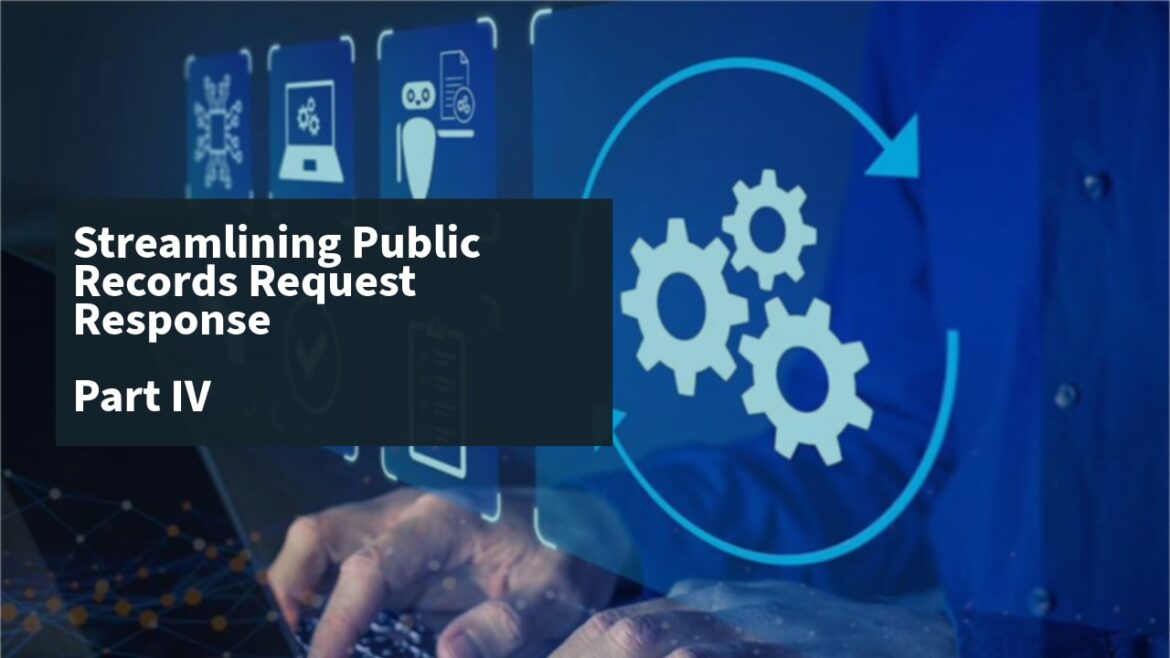eDiscovery Daily Blog
Improving Processes to Streamline Public Records/FOIA Request Response
(This is the fourth blog in a five-part series on streamlining public records request response.)
By Rick Clark
Managing Freedom of Information Act (FOIA) or similar public records requests in State or Local government agencies is a complex process that requires meticulous attention to detail and adherence to strict timelines. While having the right technology and skilled personnel is crucial, efficient processes are equally important to ensure compliance with transparency laws and provide timely responses to requests.
The first step in the FOIA request management process is the receipt of the request. Requests can be submitted through various channels, such as mail, email, or online portals, depending on the agency’s procedures. Once a request is received, it is reviewed to determine the scope and nature of the information being requested. The request is then assigned to the appropriate department or individual for processing.
The next step is the search and retrieval of the requested documents. This involves conducting a thorough search of the agency’s records, including physical files, electronic databases, emails, and other relevant sources of information. Once the documents are retrieved, they are reviewed to determine if any information is exempt from disclosure under FOIA. Exemptions may include classified information, personal privacy information, or other sensitive material.
If any exempt information is found, it is redacted from the documents before they are released to the requester. Once the documents have been reviewed and any necessary redactions have been made, they are approved for release by the designated authority within the agency. The agency then notifies the requester of the decision on their FOIA request and provides them with a copy of the requested documents, if applicable.
FOIA requires agencies to respond to requests within a certain time limit, typically 10 to 20 days. If more time is needed to process the request, the agency must notify the requester and provide an estimated completion date. The agency must also maintain records of all FOIA requests received, including the request itself, any correspondence with the requester, and copies of the documents provided in response to the request.
In the fifth and final blog of this series, you will learn how to evaluate technologies to speed public records request response.
Read the blogs #1-3 of the series here on reducing the time and cost of records requests response here.
Find out more about how CloudNine can help you to streamline public records request response with our cloud-based eDiscovery solution and set time to meet with us.
About the Author
Rick Clark is VP, Strategic Partnerships at CloudNine and has 20+ years of experience in forensics and eDiscovery. Focused on innovation and education, he co-founded ESI Analyst, now CloudNine Analyst, as well as Wave Software and the Master’s Conference.

